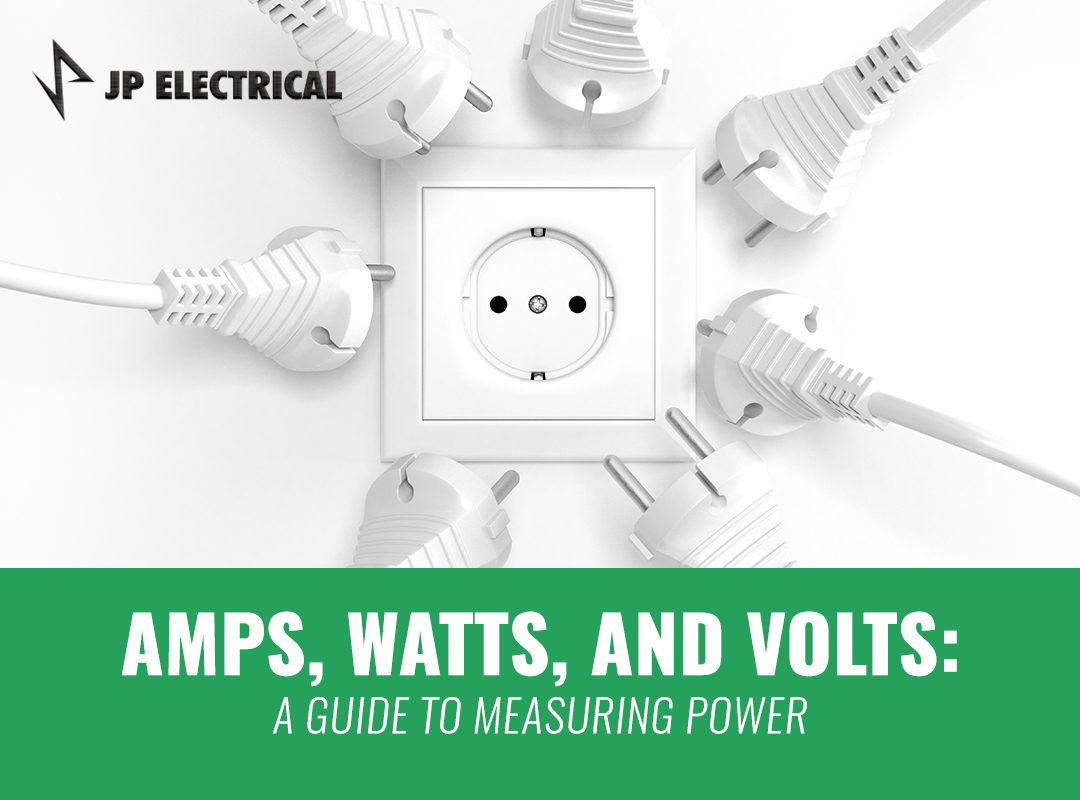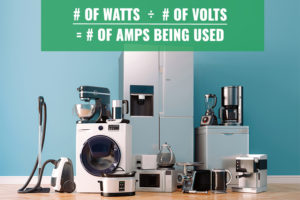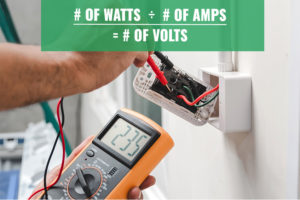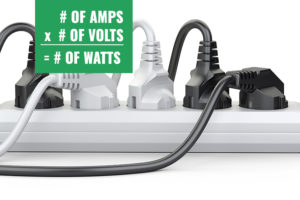AMPS, WATTS, AND VOLTS: A GUIDE TO MEASURING POWER
Posted on May 17, 2019 by Oozle Media
Have you ever wondered why power outages happen? There are a few possible reasons, but if your home or business frequently experiences power outages, you may be overloading your circuit breaker with more appliances than it can handle. To help you better understand how to measure power and know how much demand you’re placing on your circuit breaker, here is a helpful guide to amps, watts, and volts.
FIRST, LET’S DEFINE OUR TERMS
Before we dive into the details, it’s important to define a few basic terms. Here’s a look at the electrical measurements you’re likely to encounter:
Amps: Short for ampere, an amp is the base unit of electrical current in the International System of Units (SI).
Volts: The SI unit of electromotive force, or the difference of potential that would drive one ampere of current against 1 ohm resistance.
Watts: The SI unit of power, equivalent to one joule per second, corresponds to the power in an electric circuit in which the potential difference is one volt and the current one ampere.
After reading these definitions, it may still be unclear what the terms actually mean. A helpful analogy is to think of electricity like flowing water. Amps would indicate the volume of water that’s moving, and volts would indicate the water pressure. Different combinations of volts and amps would yield different types of flows. For example, high pressure with low volume would be like a dental Waterpik, while high pressure and high volume would be like a fire hose. Watts measures how much force is produced by a type of electrical flow.
CALCULATING POWER MEASUREMENTS
AMP RATING
Your circuit breaker can only handle a certain amount of amperage, or a certain volume of electricity. It has a specific amperage rating that allows it to work and provide your home with electricity. If this limit is exceeded, your breaker will shut down in order to prevent your home’s wiring and appliances from being damaged.
HOW DO YOU FIND OUT YOUR HOME’S AMPERAGE?
This is pretty simple. All you have to do is go to your circuit breaker and check the handle. Most household circuits carry 15-20 amps, and the newer your home is the higher the amperage is more likely to be. By knowing what your amperage is, you can know how many devices you can support with it.
HOW MUCH AMPERAGE DO YOUR DEVICES USE?
First, make sure you know how many amps your circuit carries. Then, check your device’s label or user manual to see how many watts and volts the device will use. Divide the number of watts by the number of volts, and that will give you the maximum amount of amperes it will require from your circuit. It might be a good idea for you to keep track of how many amperes each device uses. This way, you can keep track of how much power you’re using. If you end up exceeding your limit, you will trip the circuit.
OUTLET VOLTAGE
Voltage refers to the amount of power that comes from your outlets. That measurement is referred to as volts. One outlet can usually produce up to 120 volts.
WHAT ARE THE DIFFERENT TYPES OF VOLTAGE CURRENTS?
Direct Current (DC): Electricity flows in one direction. This is the type of current that most of your digital electronics will use.
Alternating Current (AC): Electricity will change the direction of its flow periodically. Most houses are wired for AC, and so your home most likely is built for it too.
HOW MANY VOLTS ARE COMING OUT OF MY OUTLET?
Again, make sure you know your circuit’s amperage number. Then, check the device you’re plugging into the outlet for how many watts it uses up. All you have to do after that is divide the number of watts by your circuit’s amperage number. The resulting number is the number of volts coming out of your outlet to help support your device.
WATT MEASUREMENTS
We’ve discussed amps and volts above, but there’s still one more to consider—watts. A watt is a measurement of electricity or one unit of power.
HOW CAN YOU CALCULATE THE NUMBER OF WATTS YOUR CIRCUIT CAN HANDLE?
All you need to know is two things. As discussed in previous calculations, you’ll need to know your circuit’s amperage. You’ll also need to know how many volts your outlet can produce. Then, multiply the amperage by the number of volts. This is the maximum amount of watts your circuit can support at one time. If you exceed that amount, it’s quite possible an electrical blowout will occur.
CONTACT JP ELECTRICAL FOR SUPPORT
If your circuit breaker ever trips or you’re experiencing any other electrical issues in your home, give us a call. You can also count on us to do the math for all your home’s electrical needs, so you can prevent a blowout before it ever occurs. We provide various residential and commercial services and are especially proficient in wiring, lighting, and electrical panels. We can also provide generators!
Categories: Electrical Maintenance




